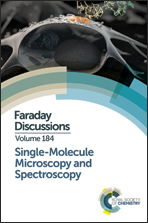Towards witnessing quantum effects in complex molecules
Abstract
Whether many-body objects like organic molecules can exhibit full quantum behaviour, including entanglement, is an open fundamental question. We present a generic theoretical protocol for entangling two organic molecules, such as dibenzoterrylene in anthracene. The availability of organic dye molecules with two-level energy structures characterised by sharp and intense emission lines are characteristics that position them favourably as candidates for quantum information processing technologies involving single-photons. Quantum entanglement can in principle be generated between several organic molecules by carefully interfering their photoluminescence spectra. Major milestones have been achieved in the last 10 years showcasing entanglement in diverse systems including ions, cold atoms, superconductors, photons, quantum dots and NV-centres in diamond, but not yet in molecules.
- This article is part of the themed collection: Single-Molecule Microscopy and Spectroscopy

 Please wait while we load your content...
Please wait while we load your content...